
Title: Java methods and code examples for calling WebService services
Abstract: This article introduces several methods for Java to call WebService services and provides specific code examples. Including using axis2 to generate client code, using JAX-WS to generate client code, using Apache CXF to generate client code, and using Spring Boot to integrate WebService services. Through these methods, Java can be easily implemented to call WebService services.
Text:
- Use axis2 to generate client code
Axis2 is an open source WebService framework. By using axis2 to generate client code, calling can be simplified. WebService service process.
First, create a Java project in Eclipse and import the axis2 related jar package.
Next, create a package named "axis2Client" in the root directory of the project, and create a new class under the package named "Axis2Client".
The following is a sample code that uses axis2 to call the WebService service:
package axis2Client;
import org.apache.axis2.AxisFault;
import org.apache.axis2.Constants;
import org.apache.axis2.addressing.EndpointReference;
import org.apache.axis2.client.Options;
import org.apache.axis2.client.ServiceClient;
import org.apache.axis2.client.async.AsyncResult;
import org.apache.axis2.client.async.Callback;
import org.apache.axis2.client.async.CallbackHandler;
import org.apache.axis2.client.async.InvocationCallback;
import org.apache.axis2.client.async.Result;
import org.apache.axis2.transport.http.HTTPConstants;
public class Axis2Client {
public static void main(String[] args) {
try {
// 创建ServiceClient对象
ServiceClient client = new ServiceClient();
// 设置服务地址
Options options = new Options();
options.setTo(new EndpointReference("http://localhost:8080/axis2/services/MyService"));
// 设置超时时间(可选)
options.setTimeOutInMilliSeconds(60000);
// 设置请求SOAP头(可选)
options.setProperty(HTTPConstants.CHUNKED, Constants.VALUE_FALSE);
options.setProperty(HTTPConstants.REUSE_HTTP_CLIENT, Constants.VALUE_TRUE);
// 设置认证信息(可选)
options.setUserName("username");
options.setPassword("password");
// 将配置应用到ServiceClient对象
client.setOptions(options);
// 调用WebService方法
Object[] result = client.invokeBlocking(
new QName("http://service.namespace.com/", "operationName"),
new Object[] { "parameter" },
new Class[] { String.class });
// 处理返回结果
String response = (String) result[0];
System.out.println(response);
} catch (AxisFault e) {
e.printStackTrace();
}
}
}- Use JAX-WS to generate client code
Java API for XML Web Services (JAX-WS) is a Java standard for developing Soap-based Web services. By using JAX-WS to generate client code, WebService services can be called more conveniently.
First, create a Java project in Eclipse and import the JAX-WS related jar package.
Next, create a package named "jaxwsClient" in the root directory of the project, and create a new class under the package named "JaxwsClient".
The following is a sample code that uses JAX-WS to call a WebService service:
package jaxwsClient;
import javax.xml.namespace.QName;
import javax.xml.ws.Service;
import java.net.URL;
public class JaxwsClient {
public static void main(String[] args) {
try {
// 创建服务的URL对象
URL url = new URL("http://localhost:8080/MyService?wsdl");
// 创建服务对象
QName qname = new QName("http://service.namespace.com/", "MyService");
Service service = Service.create(url, qname);
// 获取服务的端口对象
MyServicePortType port = service.getPort(MyServicePortType.class);
// 调用WebService方法
String response = port.operationName("parameter");
// 处理返回结果
System.out.println(response);
} catch (Exception e) {
e.printStackTrace();
}
}
}- Use Apache CXF to generate client code
Apache CXF is a A framework for developing Web services that simplifies the process of calling WebService services by using Apache CXF to generate client code.
First, create a Java project in Eclipse and import the Apache CXF related jar package.
Next, create a package named "cxfClient" in the root directory of the project, and create a new class under the package named "CxfClient".
The following is a sample code using Apache CXF to call WebService service:
package cxfClient;
import org.apache.cxf.jaxws.JaxWsProxyFactoryBean;
public class CxfClient {
public static void main(String[] args) {
try {
// 创建JaxWsProxyFactoryBean对象
JaxWsProxyFactoryBean factory = new JaxWsProxyFactoryBean();
// 设置服务地址
factory.setAddress("http://localhost:8080/MyService");
// 设置服务接口
factory.setServiceClass(MyServicePortType.class);
// 创建接口代理对象
MyServicePortType port = (MyServicePortType) factory.create();
// 调用WebService方法
String response = port.operationName("parameter");
// 处理返回结果
System.out.println(response);
} catch (Exception e) {
e.printStackTrace();
}
}
}- Using Spring Boot to integrate WebService service
Spring Boot provides support for WebService The integration function of the service makes it easier to call the WebService by using Spring Boot to integrate the WebService service.
First, in the Spring Boot project, add support for WebService, create an interface named "MyService", and define the operation method of WebService.
@WebService
public interface MyService {
@WebMethod
String operationName(String parameter);
}Then, in the Spring Boot project, create a class named "MyServiceImpl", implement the "MyService" interface, and implement the operation methods defined in the interface.
@WebService(serviceName = "MyService")
public class MyServiceImpl implements MyService {
@Override
public String operationName(String parameter) {
// 业务逻辑处理
return "response";
}
}Finally, in the Spring Boot project, perform relevant configurations, start the Spring Boot application, and call WebService.
@RestController
public class MyController {
private final MyService myService;
public MyController(MyService myService) {
this.myService = myService;
}
@GetMapping("/invokeWebService")
public String invokeWebService() {
String response = myService.operationName("parameter");
return response;
}
}Summary:
This article introduces several methods of Java calling WebService services and provides specific code examples. These methods can be used to easily implement Java calls to WebService services.
The above is the detailed content of What are the methods for calling WebService services in Java?. For more information, please follow other related articles on the PHP Chinese website!
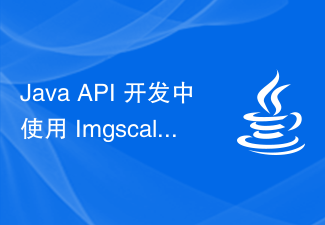 Java API 开发中使用 Imgscalr 进行图片处理Jun 18, 2023 am 08:40 AM
Java API 开发中使用 Imgscalr 进行图片处理Jun 18, 2023 am 08:40 AMJavaAPI开发中使用Imgscalr进行图片处理随着移动互联网的发展和互联网广告的普及,图片已经成为了很多应用中必不可少的元素。无论是展示商品、构建社交圈、还是增强用户体验,图片都扮演着重要的角色。在应用中,经常需要对图片进行裁剪、缩放、旋转等操作,这就需要借助一些图片处理工具来实现。而Imgscalr则是一个JavaAPI开发中非常常用的图片
 Java API 开发中使用 ZooKeeper 进行分布式锁处理Jun 17, 2023 pm 10:36 PM
Java API 开发中使用 ZooKeeper 进行分布式锁处理Jun 17, 2023 pm 10:36 PM随着现代应用程序的不断发展和对高可用性和并发性的需求日益增长,分布式系统架构变得越来越普遍。在分布式系统中,多个进程或节点同时运行并共同完成任务,进程之间的同步变得尤为重要。由于分布式环境下许多节点可以同时访问共享资源,因此,在分布式系统中,如何处理并发和同步问题成为了一项重要的任务。在此方面,ZooKeeper已经成为了一个非常流行的解决方案。ZooKee
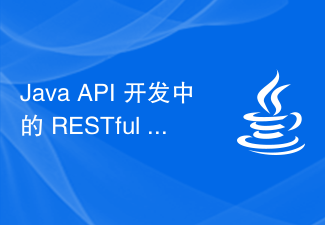 Java API 开发中的 RESTful 接口设计Jun 18, 2023 am 08:31 AM
Java API 开发中的 RESTful 接口设计Jun 18, 2023 am 08:31 AM随着互联网技术的发展,RESTful风格的API设计成为了最为流行的一种设计方式。而Java作为一种主要的编程语言,也越来越多地在RESTful接口的开发中扮演着重要的角色。在JavaAPI开发中,如何设计出优秀的RESTful接口,成为了一个需要我们深入思考的问题。RESTful接口的基本原则首先,我们需要了解RESTful接口的基本原则。REST即Re
 PHP调用API接口的方法及实现Jun 18, 2023 pm 11:22 PM
PHP调用API接口的方法及实现Jun 18, 2023 pm 11:22 PM随着互联网、云计算和大数据时代的到来,越来越多的应用程序需要调用第三方的API接口来获取数据,实现数据互通和协同工作。PHP作为一种常用的服务器端语言,也可以通过调用API接口来实现不同系统的数据交互和整合。本文将介绍PHP调用API接口的方法及实现过程。一、API接口简介API(ApplicationProgrammingInterface),应用程序
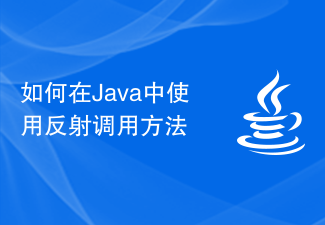 如何在Java中使用反射调用方法Dec 23, 2023 am 08:18 AM
如何在Java中使用反射调用方法Dec 23, 2023 am 08:18 AM如何在Java中使用反射调用方法反射是Java语言的一个重要特性,它可以在运行时动态地获取类的信息并操作类的成员,包括字段、方法和构造函数等。使用反射可以在编译时不知道具体类的情况下操作类的成员,这使得我们能够编写更加灵活和通用的代码。本文将介绍如何在Java中使用反射调用方法,并给出具体的代码示例。一、获取类的Class对象在Java中,要使用反射来调用方
 Java API 开发中使用 Hutool 进行工具类处理Jun 17, 2023 pm 10:53 PM
Java API 开发中使用 Hutool 进行工具类处理Jun 17, 2023 pm 10:53 PMJava开发人员在进行API开发时,往往需要处理各种工具类,这些工具类可以节省开发时间并且提高代码的可复用性。Hutool是一个Java工具类库,提供了丰富的工具类和常用的算法,能够提高API开发的效率。Hutool支持Java8及以上版本,可以方便地用于各种场景,例如字符串处理、日期时间处理、加密解密、文件操作等等,以下就是一些常用的功能。字符串处理Hut
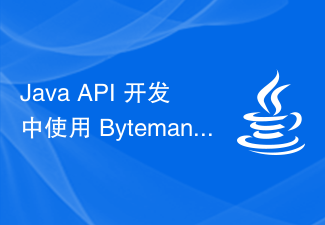 Java API 开发中使用 Byteman 进行动态代码注入Jun 18, 2023 am 08:03 AM
Java API 开发中使用 Byteman 进行动态代码注入Jun 18, 2023 am 08:03 AMJavaAPI开发中使用Byteman进行动态代码注入在日常的JavaAPI开发中,经常会遇到一些需要进行动态代码注入的场景。动态代码注入可以用于调试、测试和性能分析等方面。在Java开发中,Byteman是一个常用的工具,它提供了一种简单且灵活的方式来进行动态字节码注入。Byteman是一个开源的Java工具,它可以在Java
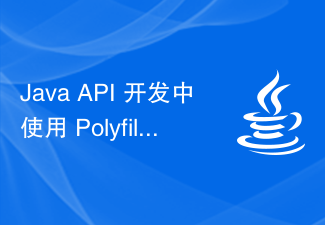 Java API 开发中使用 Polyfill 进行浏览器兼容处理Jun 18, 2023 am 08:21 AM
Java API 开发中使用 Polyfill 进行浏览器兼容处理Jun 18, 2023 am 08:21 AMPolyfill是一种技术,用于填充浏览器不支持的功能或API的空缺,并确保代码在多种浏览器环境中正常运行。在Java开发中,Polyfill可以帮助开发人员在不同浏览器中实现一致的API体验,特别是在一些较老版本的浏览器中。JavaAPI在使用时,经常需要面对诸如浏览器兼容性等问题。随着不断更新的浏览器版本的发布,JavaAPI也在不断发展,随之而来的


Hot AI Tools

Undresser.AI Undress
AI-powered app for creating realistic nude photos

AI Clothes Remover
Online AI tool for removing clothes from photos.

Undress AI Tool
Undress images for free

Clothoff.io
AI clothes remover

AI Hentai Generator
Generate AI Hentai for free.

Hot Article

Hot Tools

MantisBT
Mantis is an easy-to-deploy web-based defect tracking tool designed to aid in product defect tracking. It requires PHP, MySQL and a web server. Check out our demo and hosting services.

MinGW - Minimalist GNU for Windows
This project is in the process of being migrated to osdn.net/projects/mingw, you can continue to follow us there. MinGW: A native Windows port of the GNU Compiler Collection (GCC), freely distributable import libraries and header files for building native Windows applications; includes extensions to the MSVC runtime to support C99 functionality. All MinGW software can run on 64-bit Windows platforms.

SublimeText3 Mac version
God-level code editing software (SublimeText3)

SublimeText3 English version
Recommended: Win version, supports code prompts!

Zend Studio 13.0.1
Powerful PHP integrated development environment





